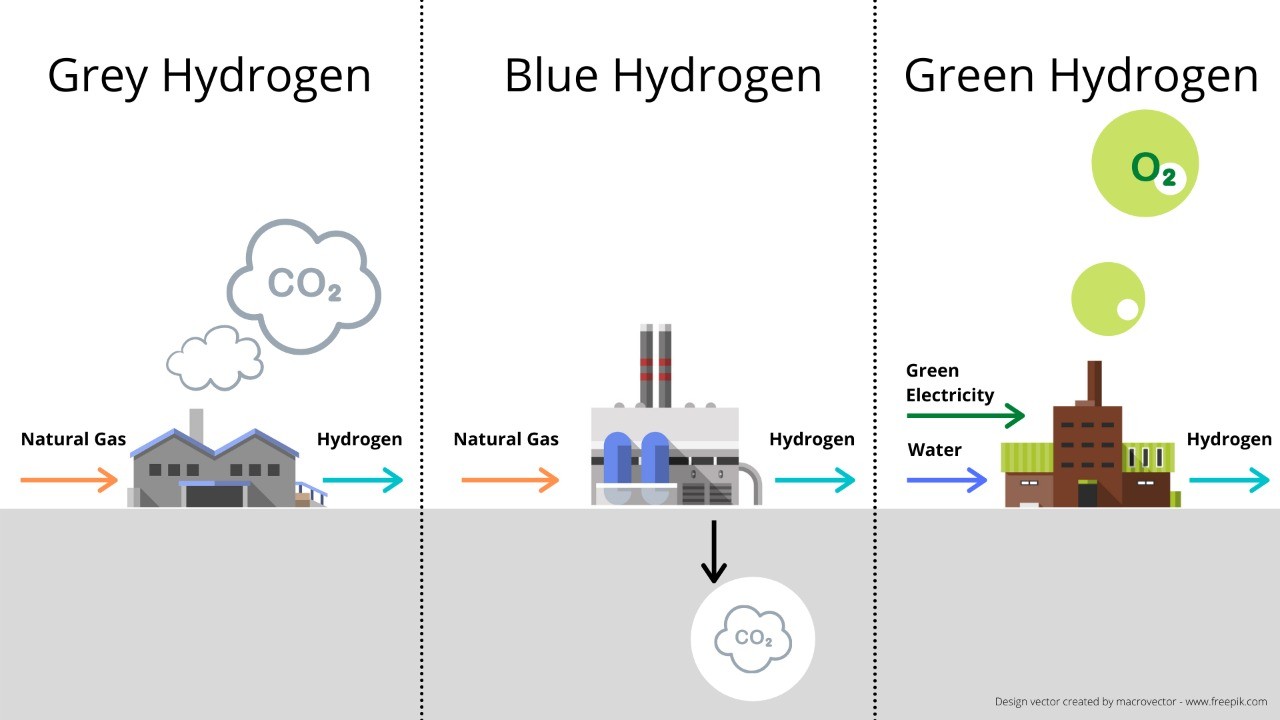
Hydro-gen-eration?
India's contribution & the difference Between Grey, Blue, and Green Hydrogen .
When we talk about net zero emission fuels, we talk about hydrogen. The lightest element in the world is our only hope at reducing greenhouse gas emissions in mobility. Thanks to the commercialization of hydrogen fuel cell vehicles, net zero emissions are a very achievable reality. With the National Hydrogen Energy Mission launched in India, it’s time we understood the hydrogen economy. While hydrogen itself used as a fuel in automobiles does not emit any greenhouse gases, the production of hydrogen cannot claim the same.
There are different processes of producing hydrogen and each affects the environment differently . Basis on these processes, the hydrogen produced has been classified as below:
Grey hydrogen:
Hydrogen is mainly produced from natural gas using processes such as Steam Methane
Reforming, Auto-thermal Reforming, or Partial Oxidation that emits considerable carbon dioxide in the process. This carbon dioxide is released into the atmosphere negatively affecting our environment. The hydrogen produced thus is categorized as “Grey hydrogen”. Up-to 95% of the hydrogen produced in the world is Grey hydrogen.
Blue hydrogen:
In order to reduce the impact of the process on the atmosphere, the carbon emissions from the processes mentioned above can be captured underground. This process is called Carbon Capture and Storage (CCS). Hydrogen produced using this process is categorized as Blue hydrogen. Although better than Grey hydrogen in respect to its environmental impact, Blue hydrogen does not completely eliminate pollution.
Green hydrogen:
Hydrogen produced by splitting water using electrolysis, if the electricity generated is using renewable sources of energy, falls under the classification of Green hydrogen. The by-product of this process is oxygen. This is the cleanest option to produce hydrogen as of today.
Both Green and Blue hydrogens are categorized as carbon-neutral options of producing hydrogen. In order to decarbonize our economy and achieve the goals set in the Paris agreement, it’s necessary that we turn to Green hydrogen. Currently the process is one of the most expensive options among those mentioned above and hence accounts for just 0.1% of worldwide hydrogen production. The Energy and Resources Institute (TERI) of India has projected that by 2050, nearly 80% of India’s hydrogen is projected to be ‘green’ – produced by renewable electricity and electrolysis and the cost of hydrogen from renewables would drop by over 50% by 2030. These ambitious projections along with the resources allocated towards achieving them have the potential to put India at the top in world hydrogen economies.
Industrial Pressure Gauge Manager at HUKETEK
1yOur company is devoted to hydrogen energy research, at present, we have a series of hydrogen products, pressure sensors, pressure gauges, and pressure gauges with sensors.